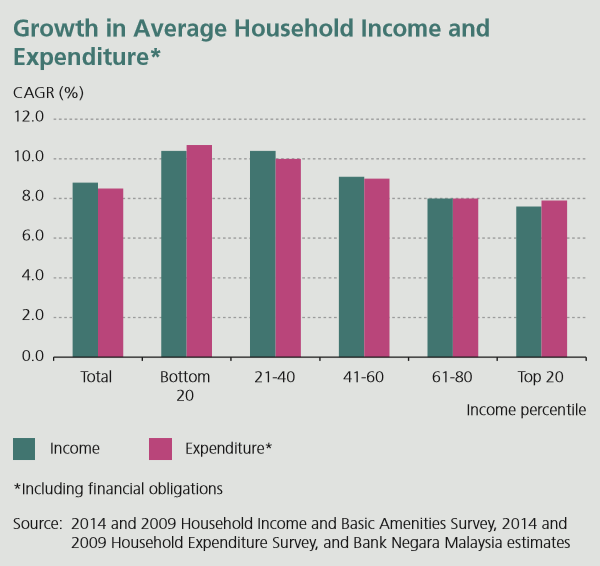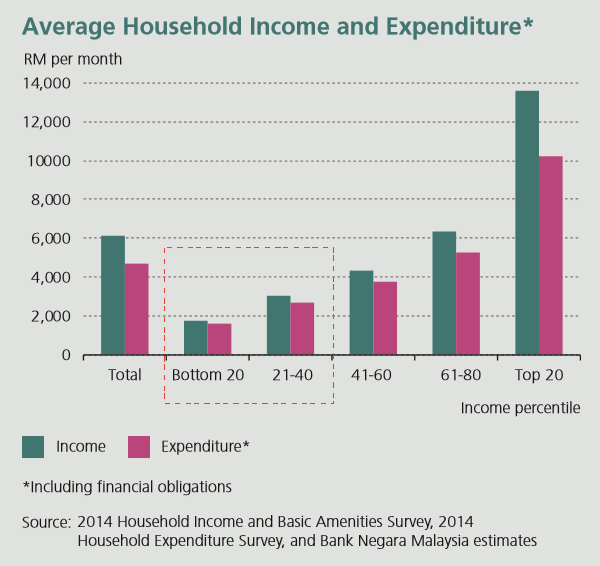It is no surprise that inflation rates are on the rise but Bank Negara Malaysia’s report delves further to reveal that inflation rates are even higher for the urban poor.
The central bank’s analysis found that inflation tends to be higher in more urbanised states and for lower income groups.
Inflation is also higher than the national average in highly-urbanised states like Kuala Lumpur, Selangor, Penang, Malacca and Johor, where 36 percent of the Malaysian population live.
 In Kuala Lumpur, inflation is highest for households at the bottom 20 percent of the income scale, recording an annual change of 3.01 percent in 2015.
In Kuala Lumpur, inflation is highest for households at the bottom 20 percent of the income scale, recording an annual change of 3.01 percent in 2015.
The annual change of the consumer price index is only 2.73 percent for the top 20 percent of households.
Inflation rates rise steadily as one goes down the income scale, it found, with the highest level annual change of inflation in 2015 recorded in Malacca at 3.14 percent.
The explanation is this – poorer households spend more of their total income on essentials like food.
Food inflation, the central bank said, made up the bulk of inflation in 2015.
The poorer households also use less fuel and will not have benefited as much from the drop in pump prices.
“Thus, the lower income households living in highly urbanised states tend to experience the largest increase in their cost of living,” it said in its 2015 annual report released yesterday.

It also found growth in the number of bottom 40 percent households who have taken loans.
“Consequently, these households, who only have a relatively small amount of savings, are vulnerable to both income and price shocks,” it said.
Household spending data also show that growth of household spending is higher than growth of income for the bottom 20 percent and top 20 percent of households.
The bottom 20 percent of households who earn less than RM2,000 are barely earning enough to cover expenditure, it found.

